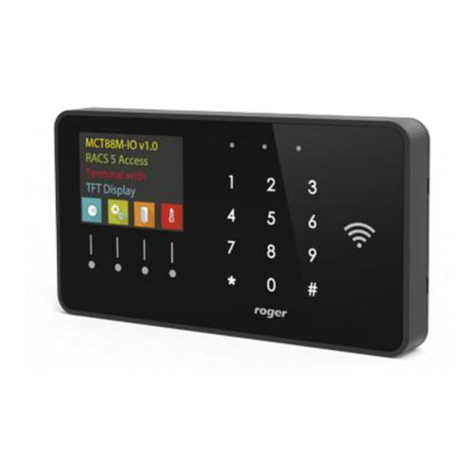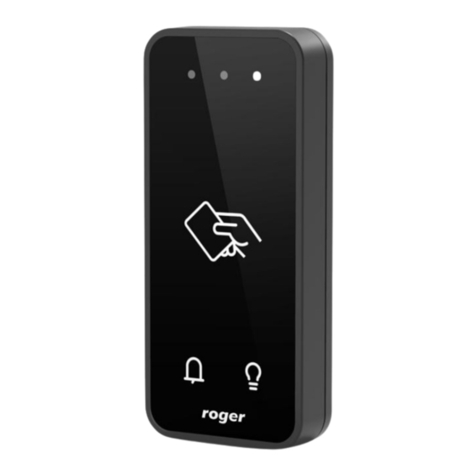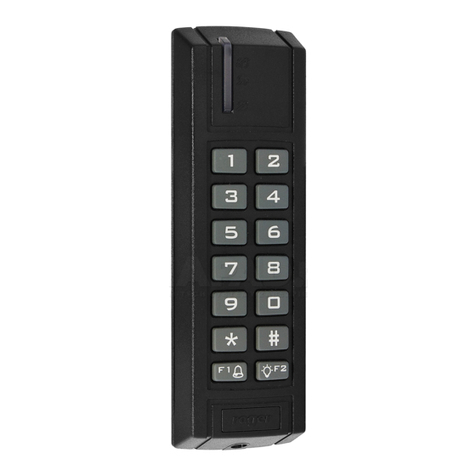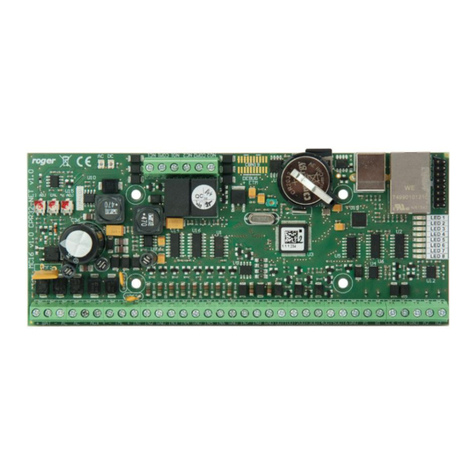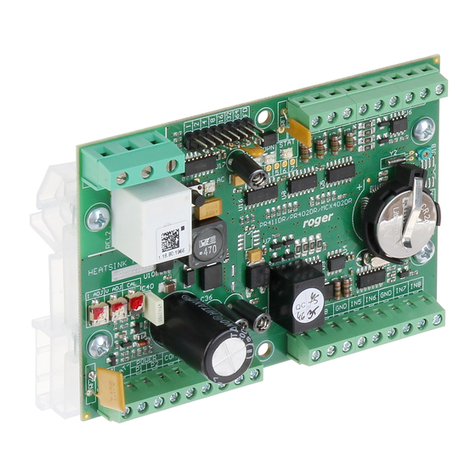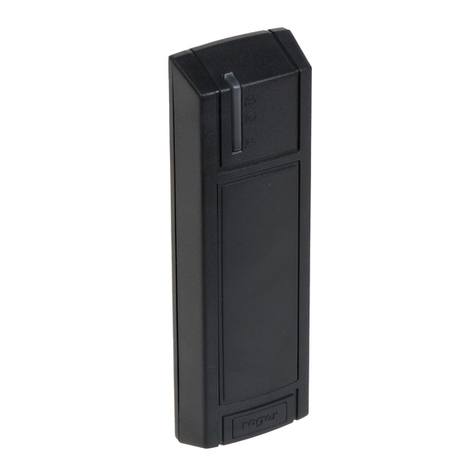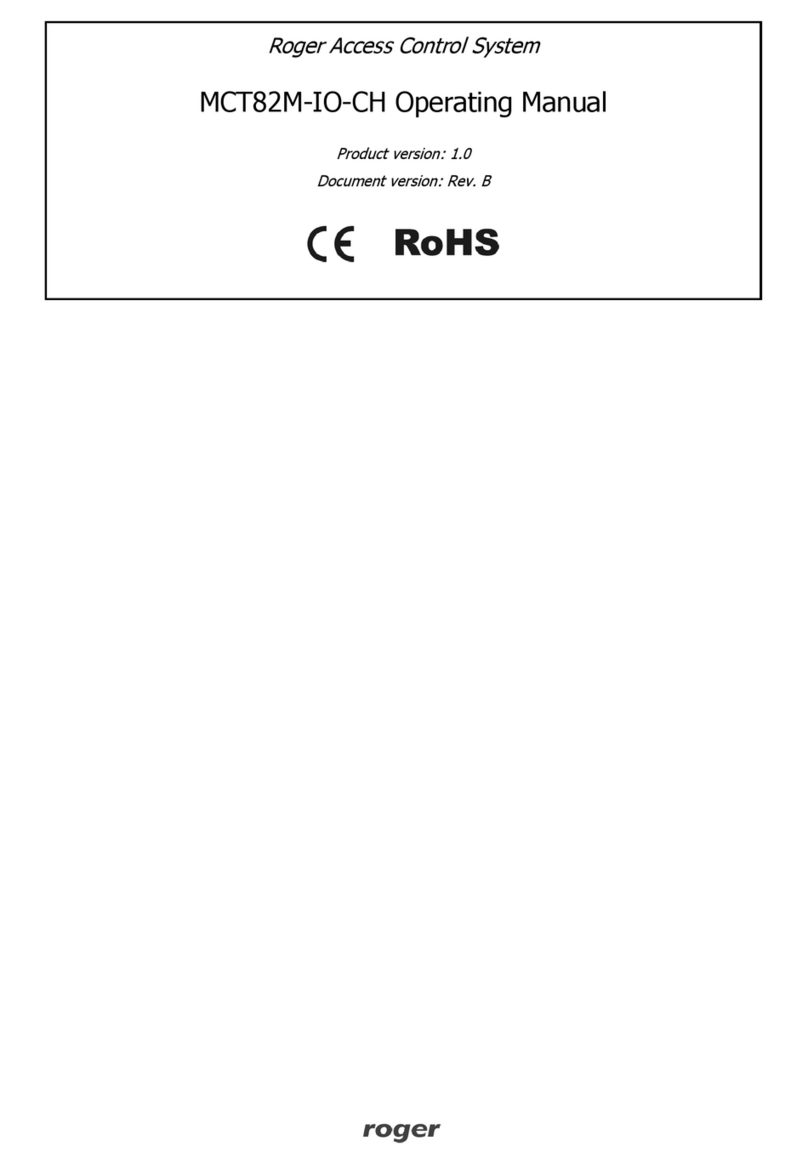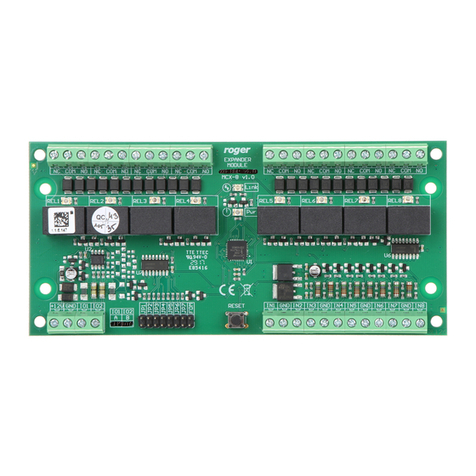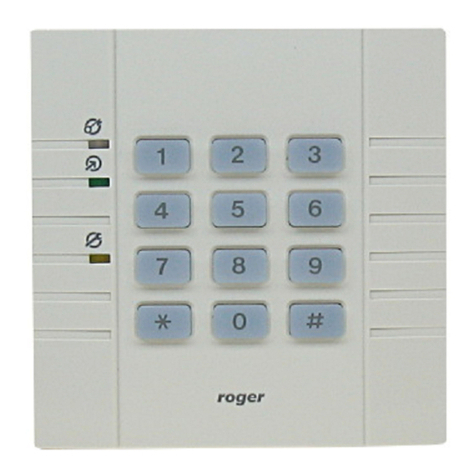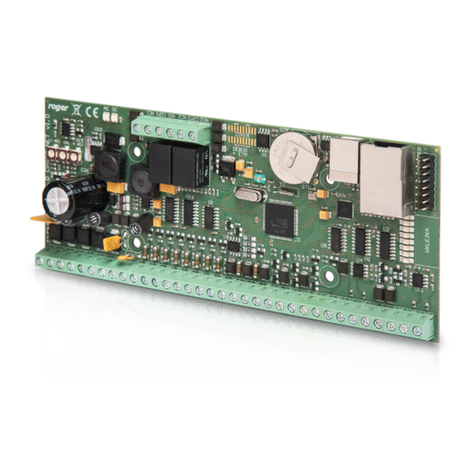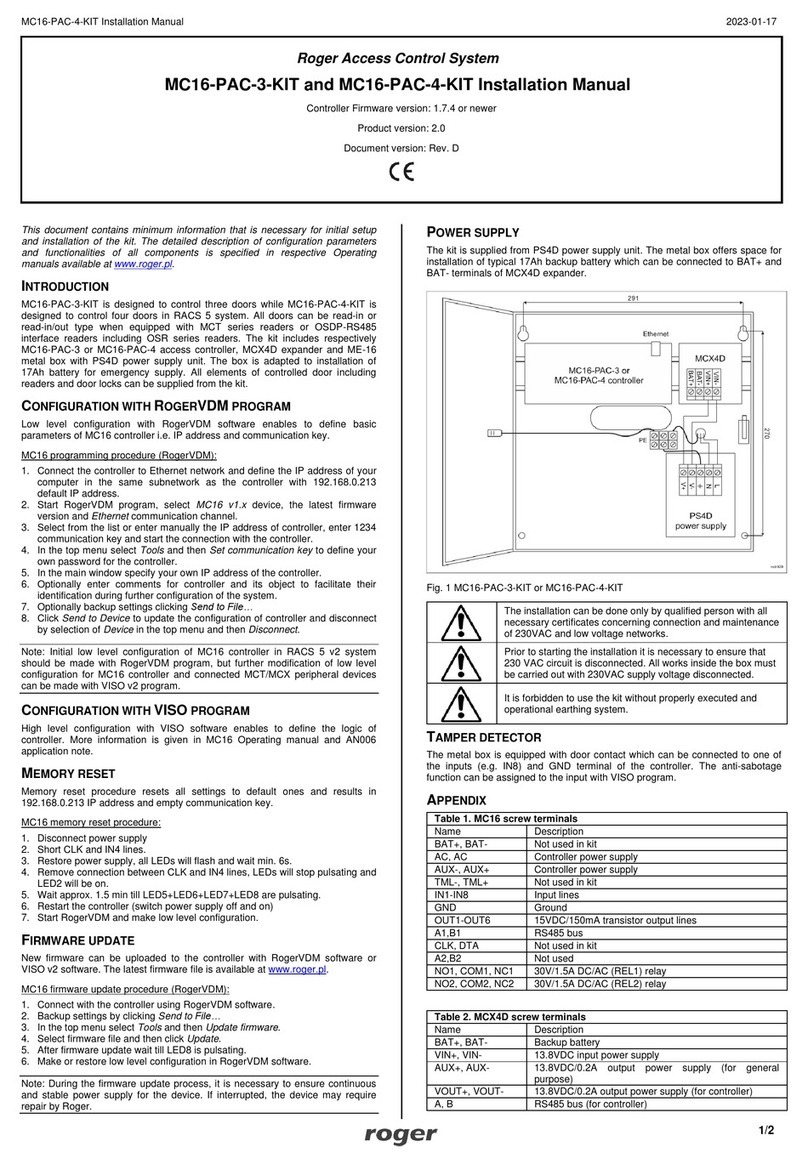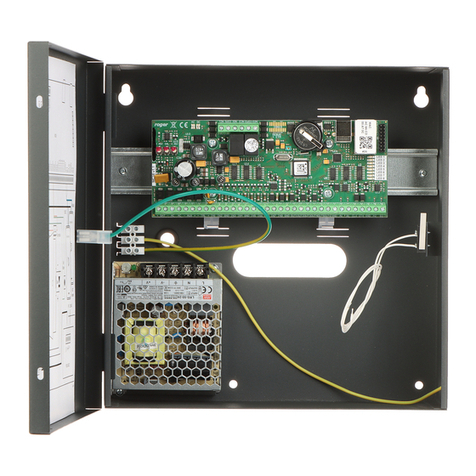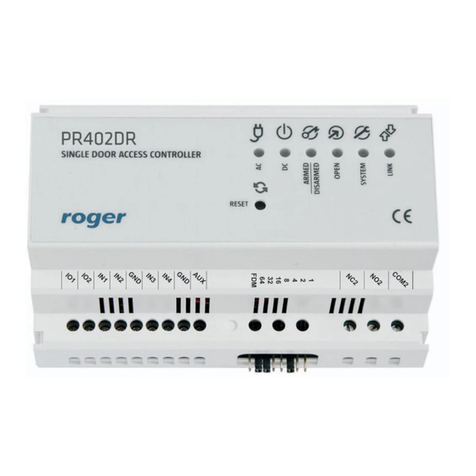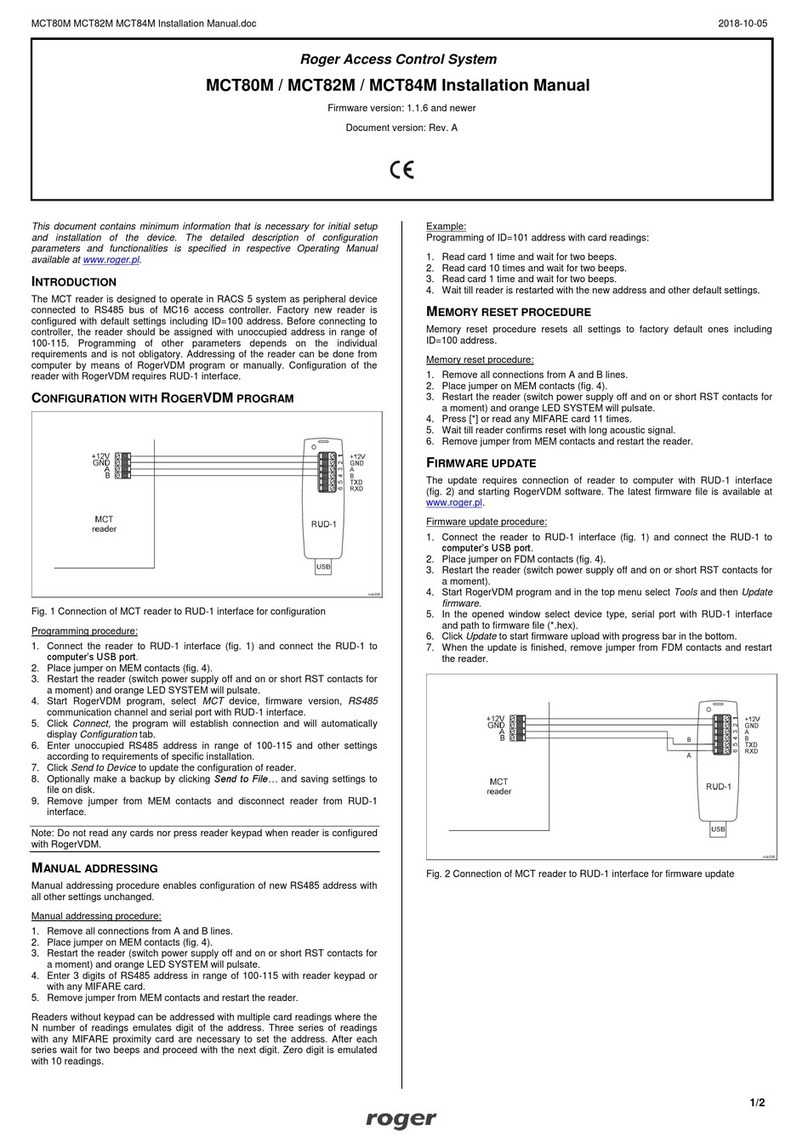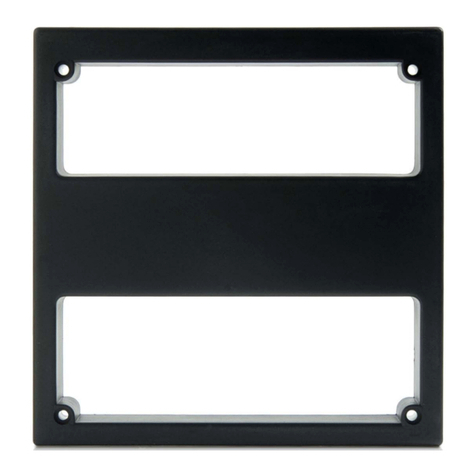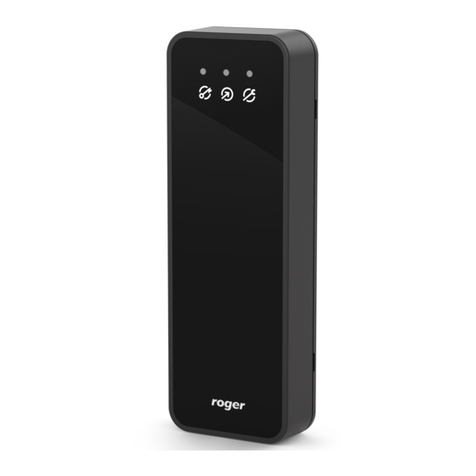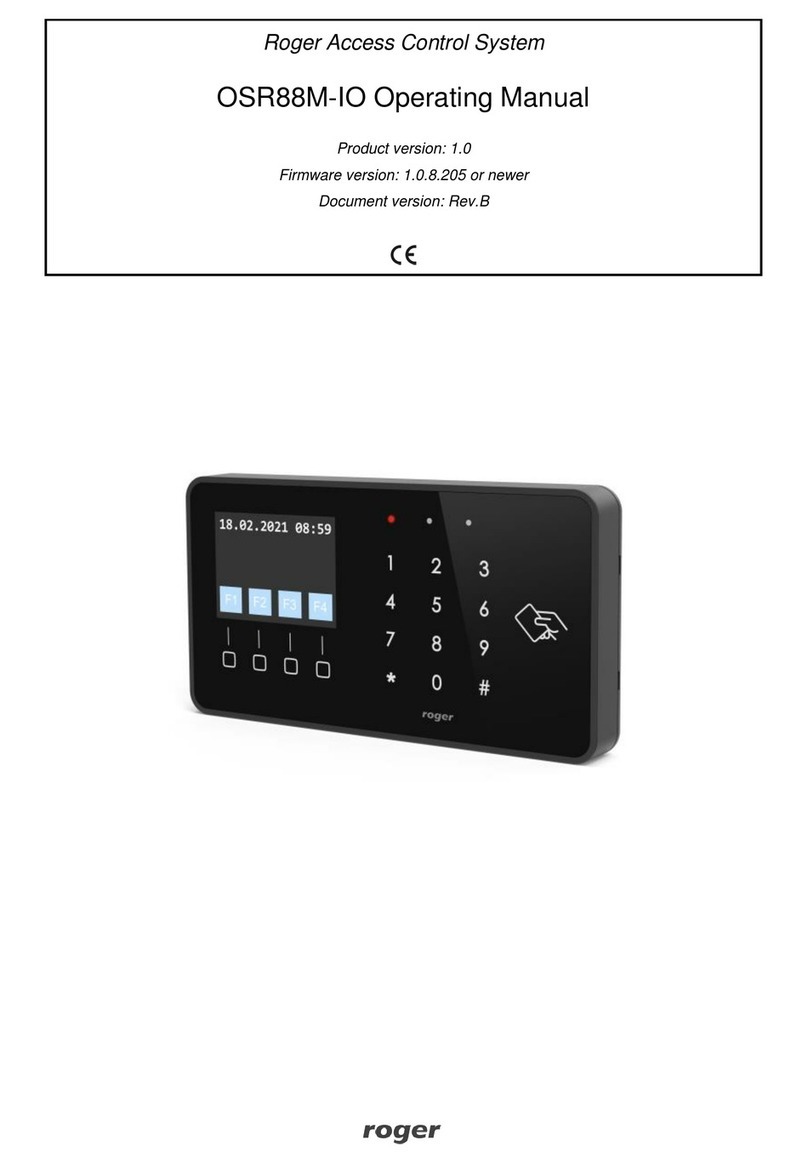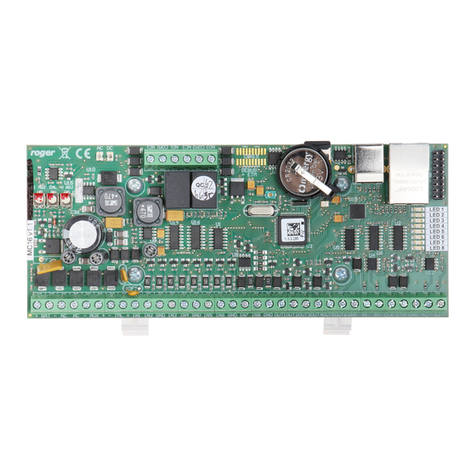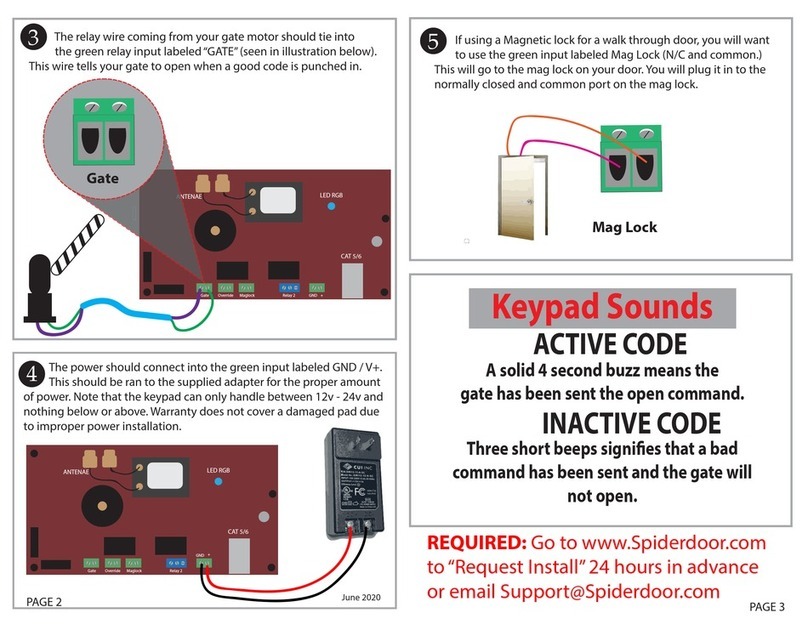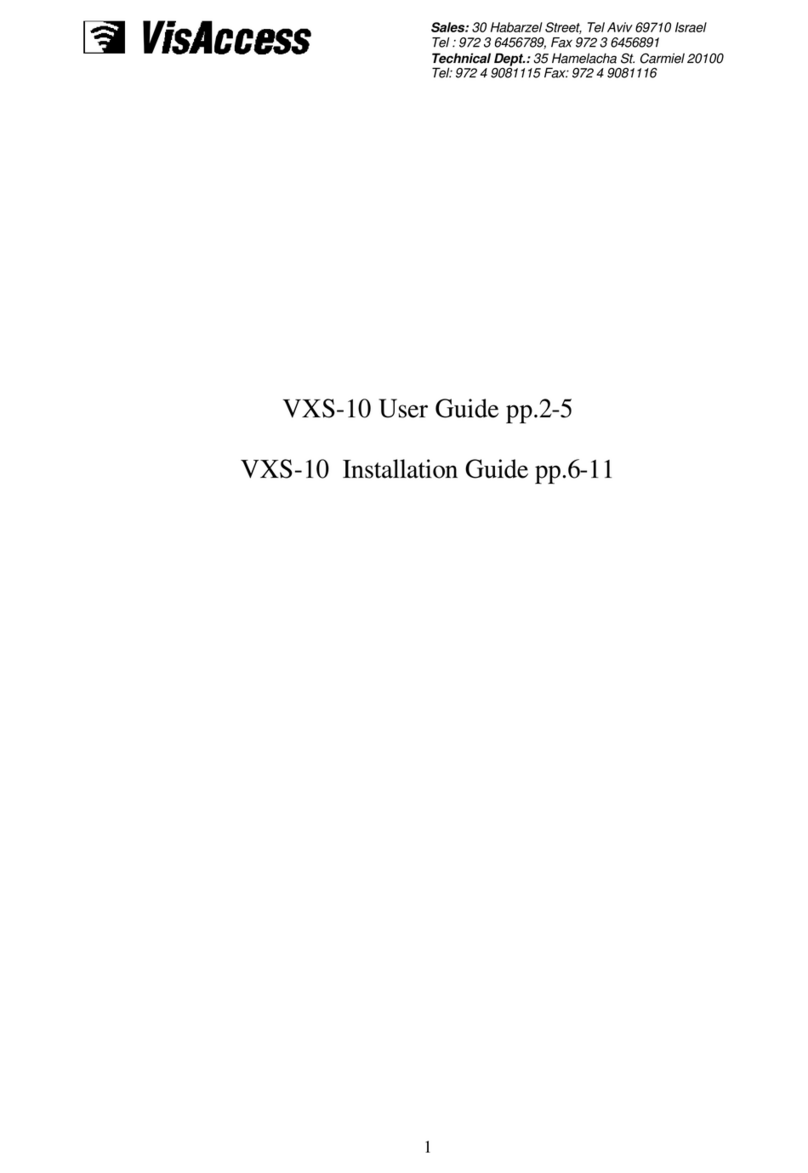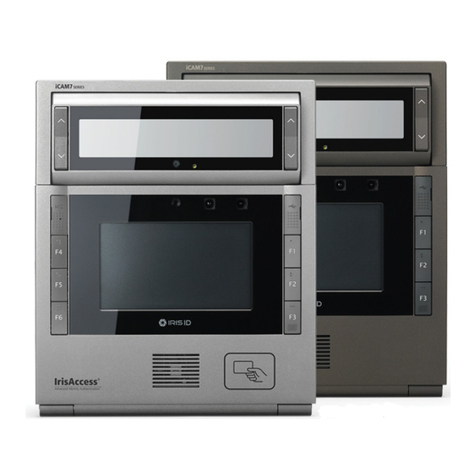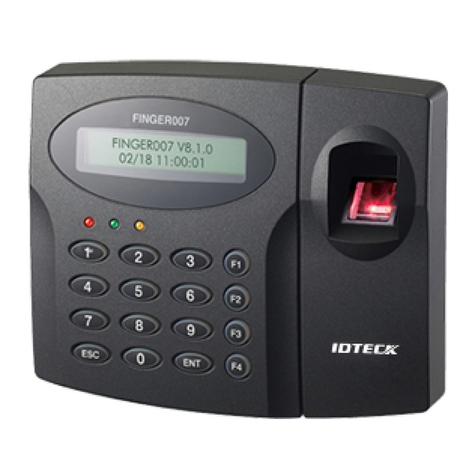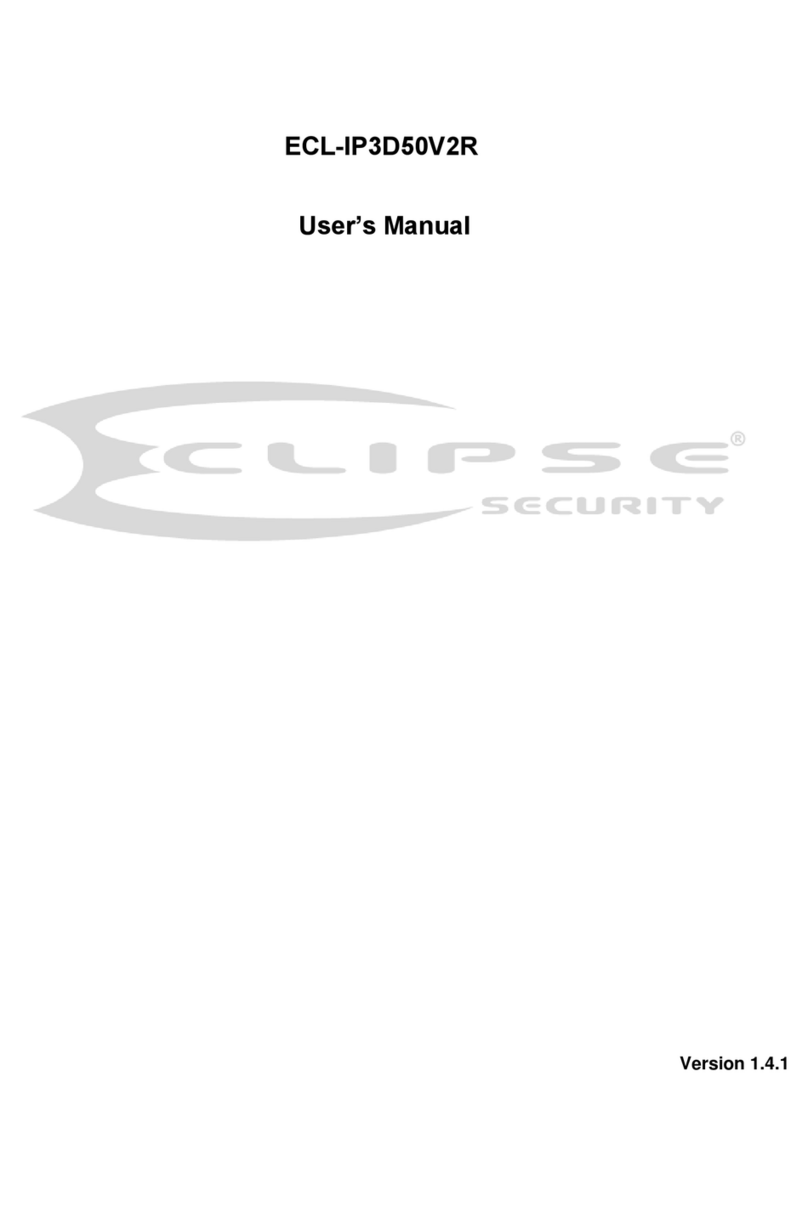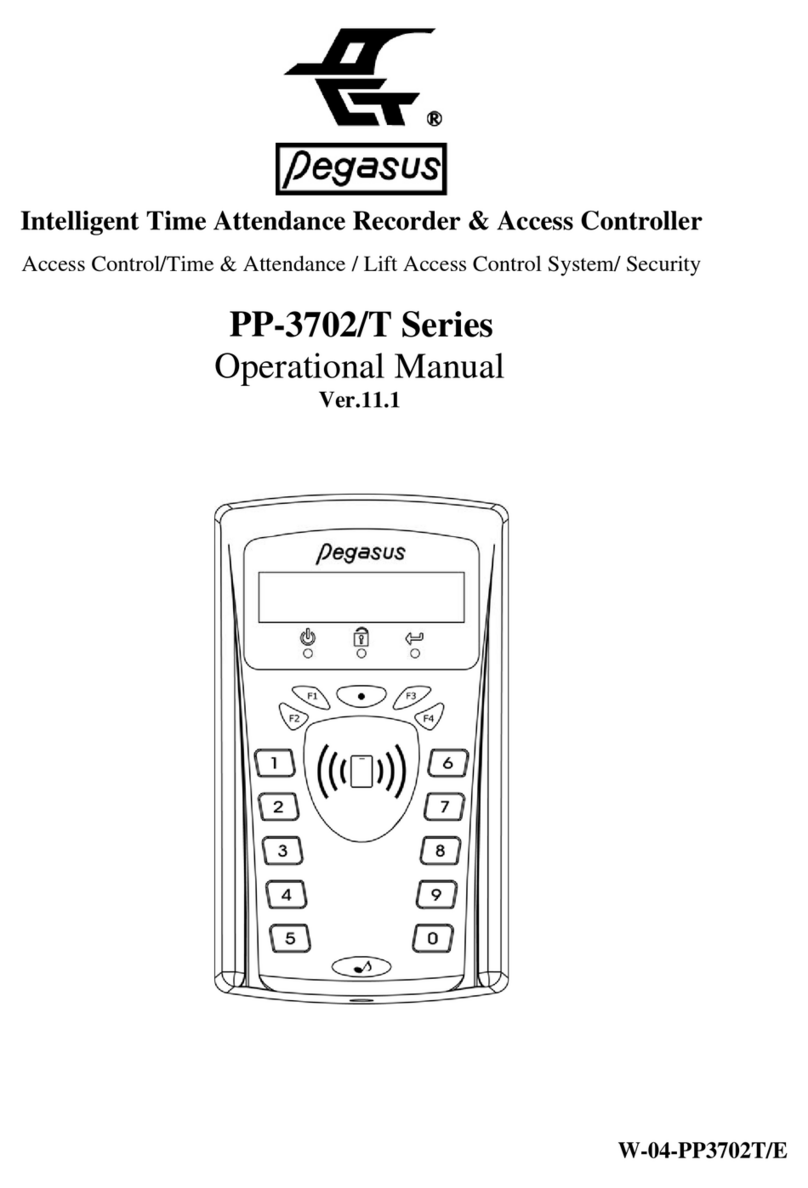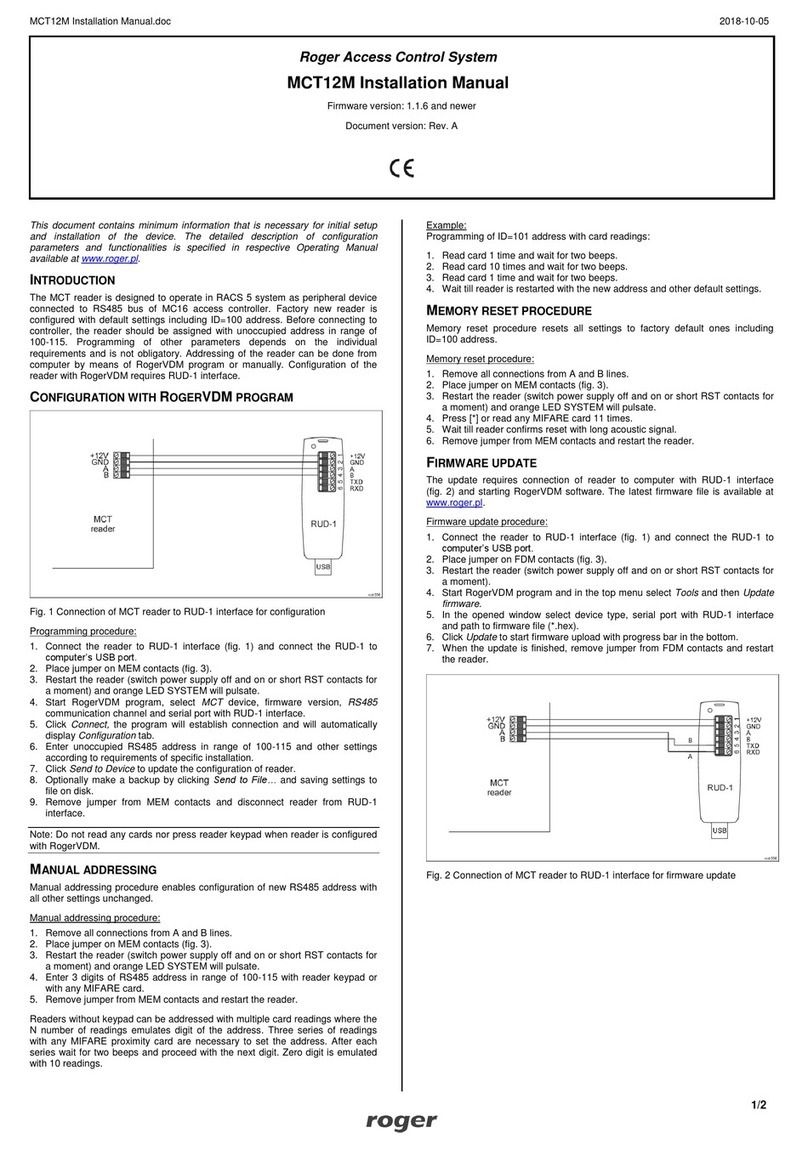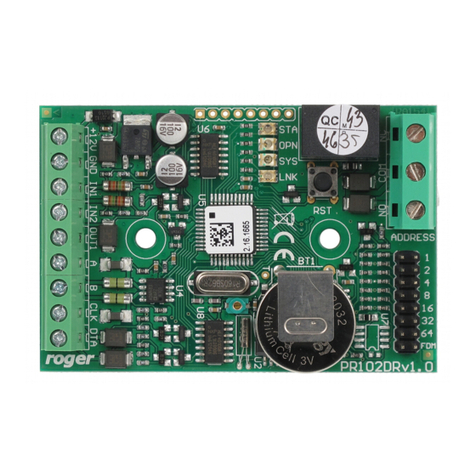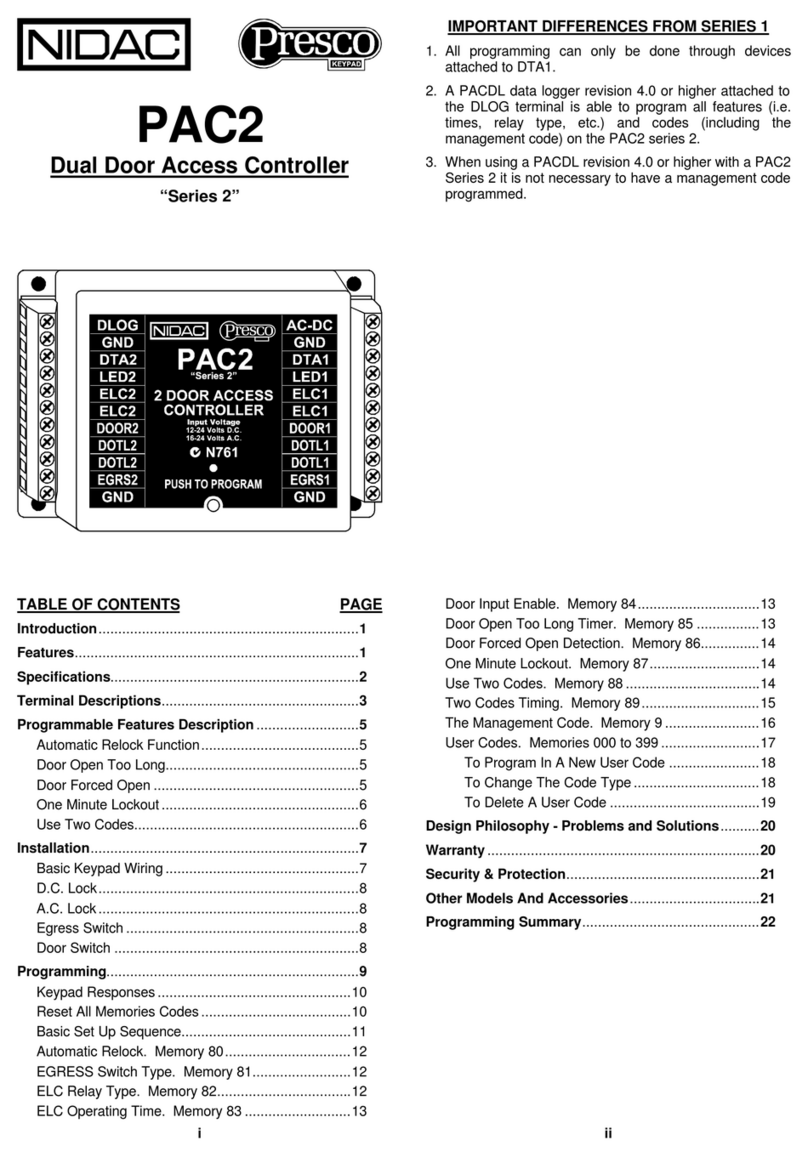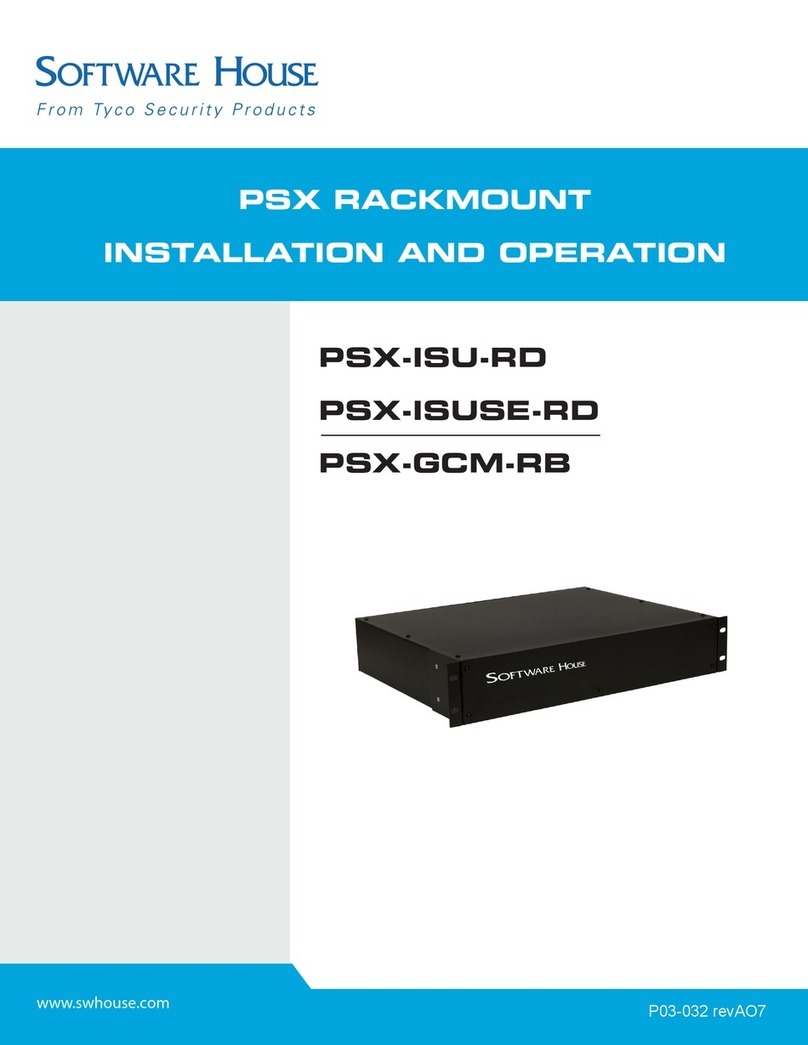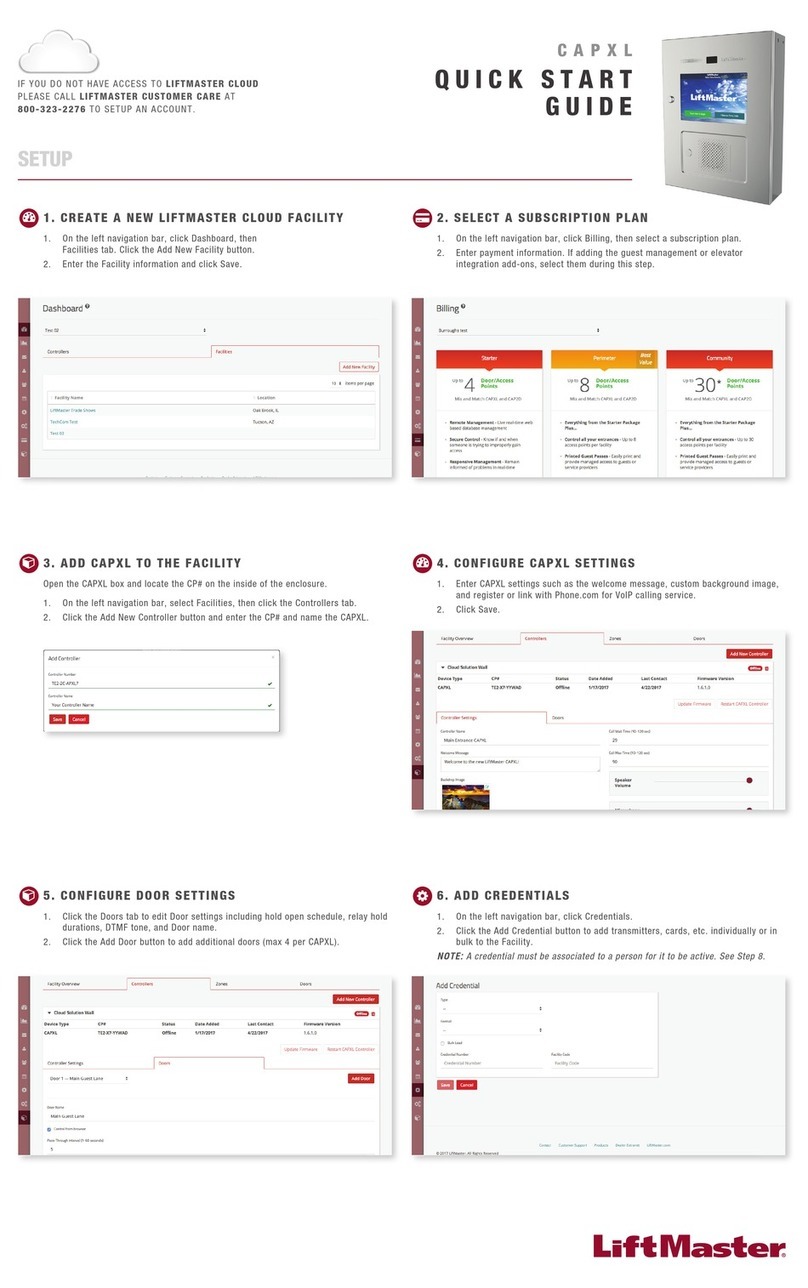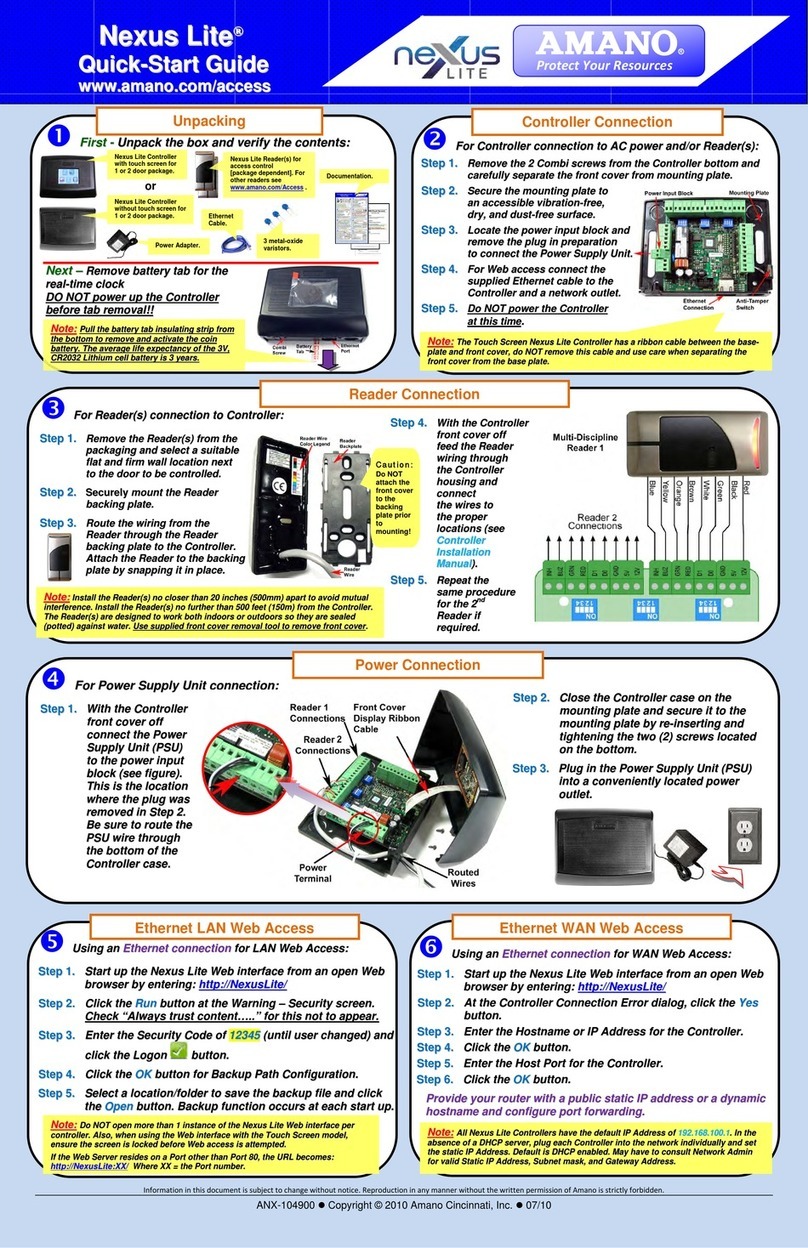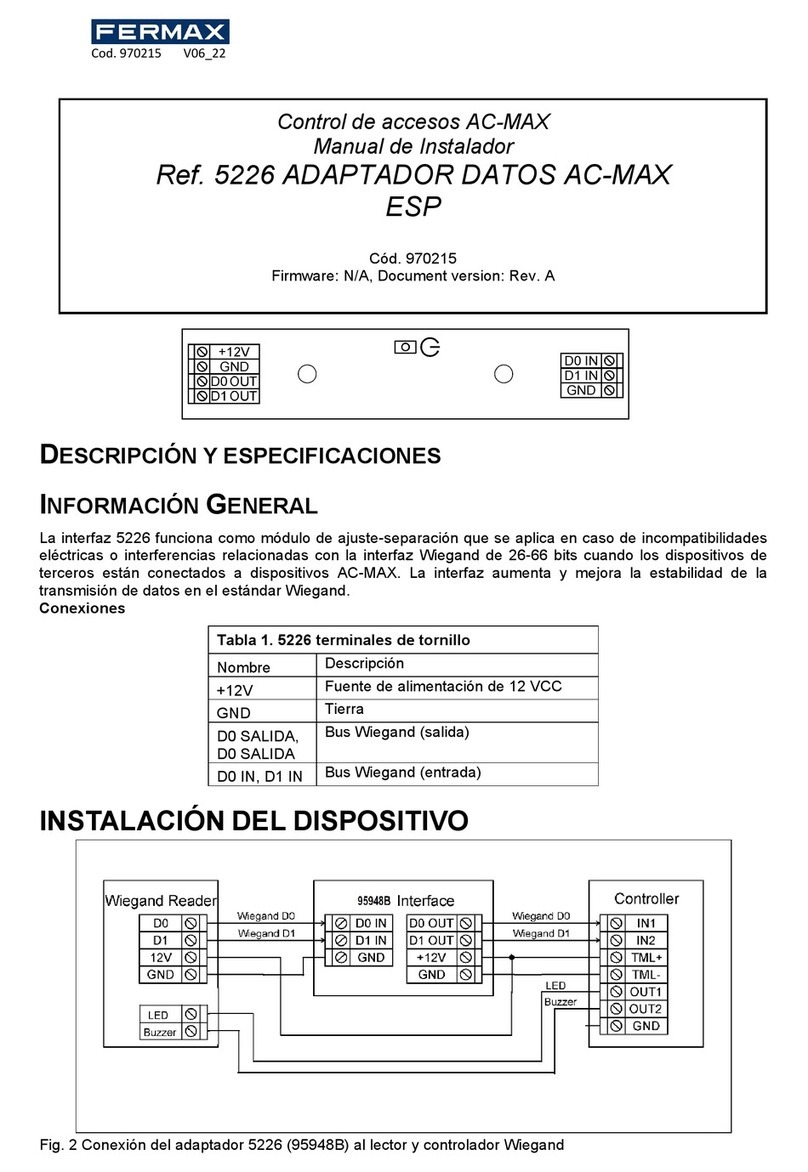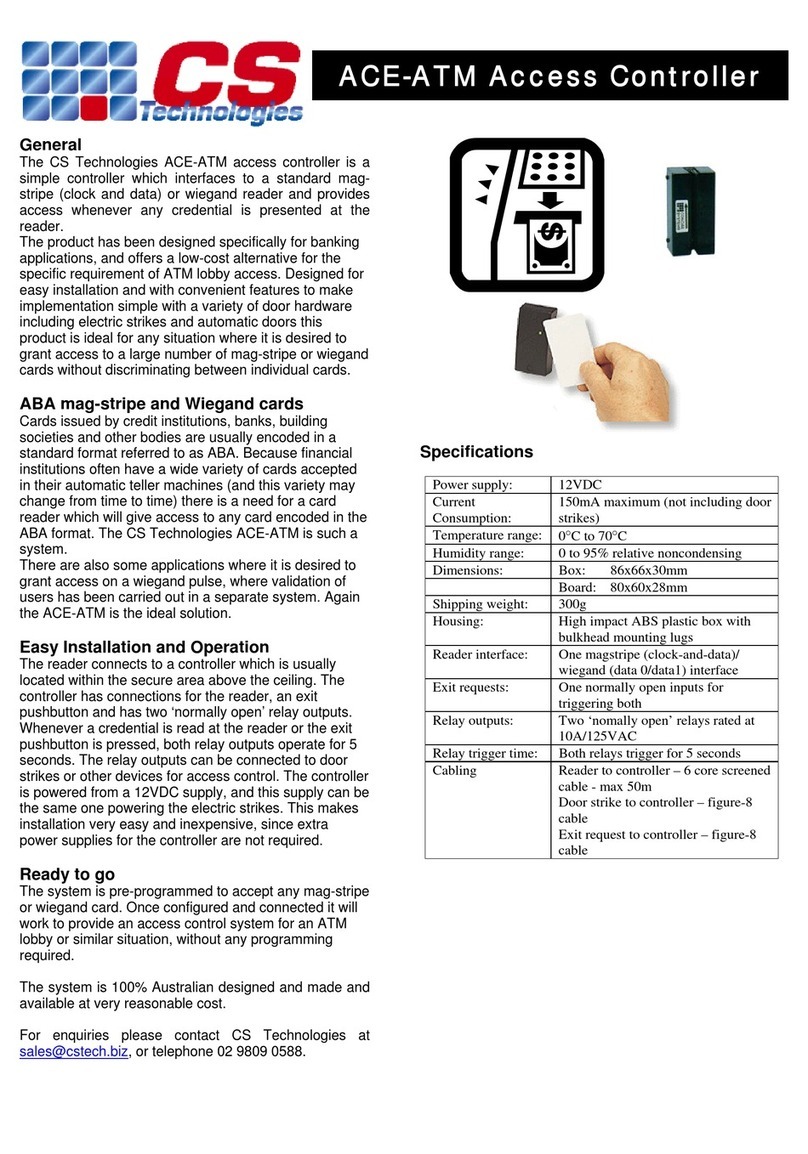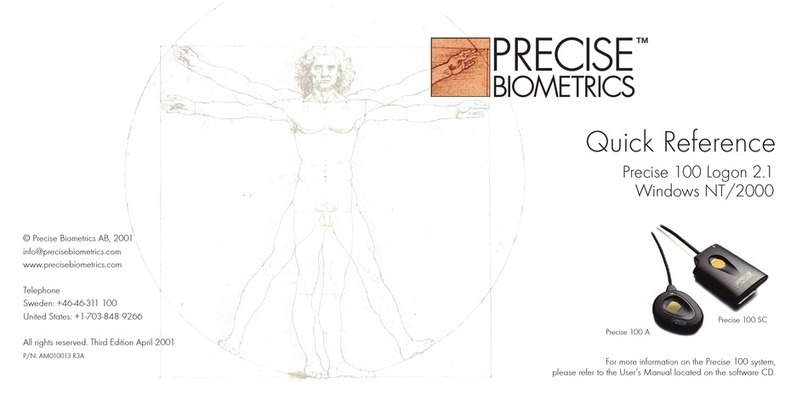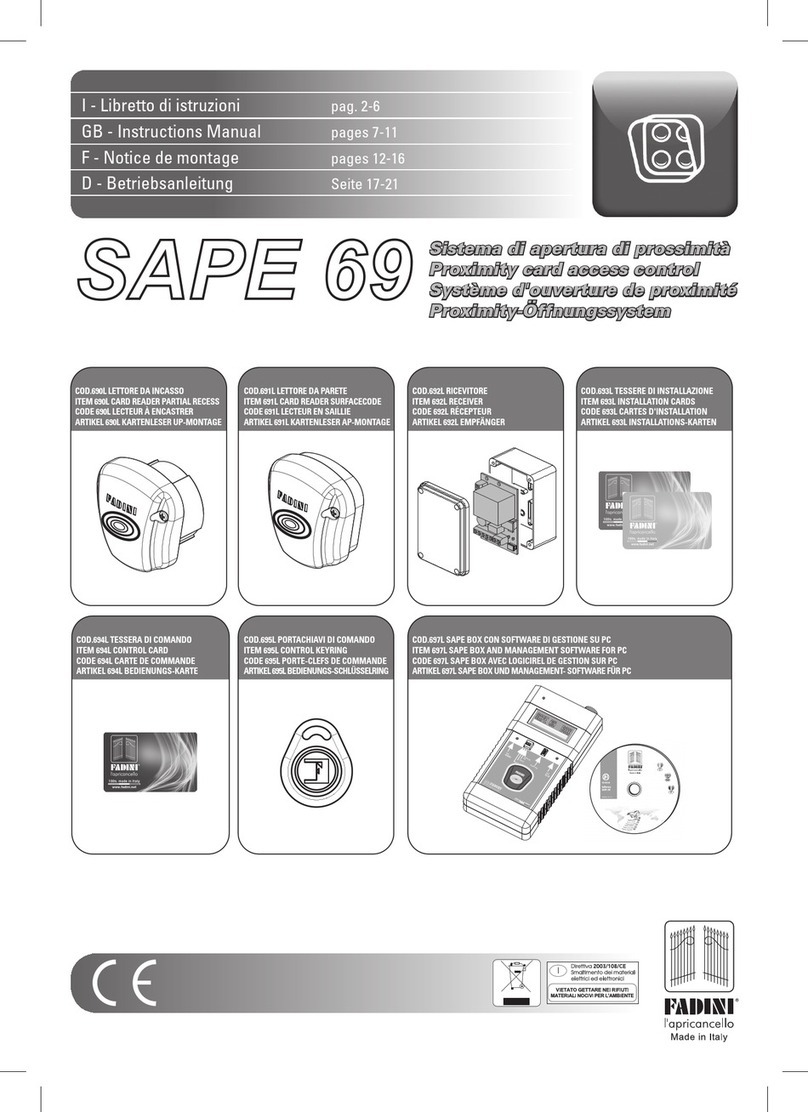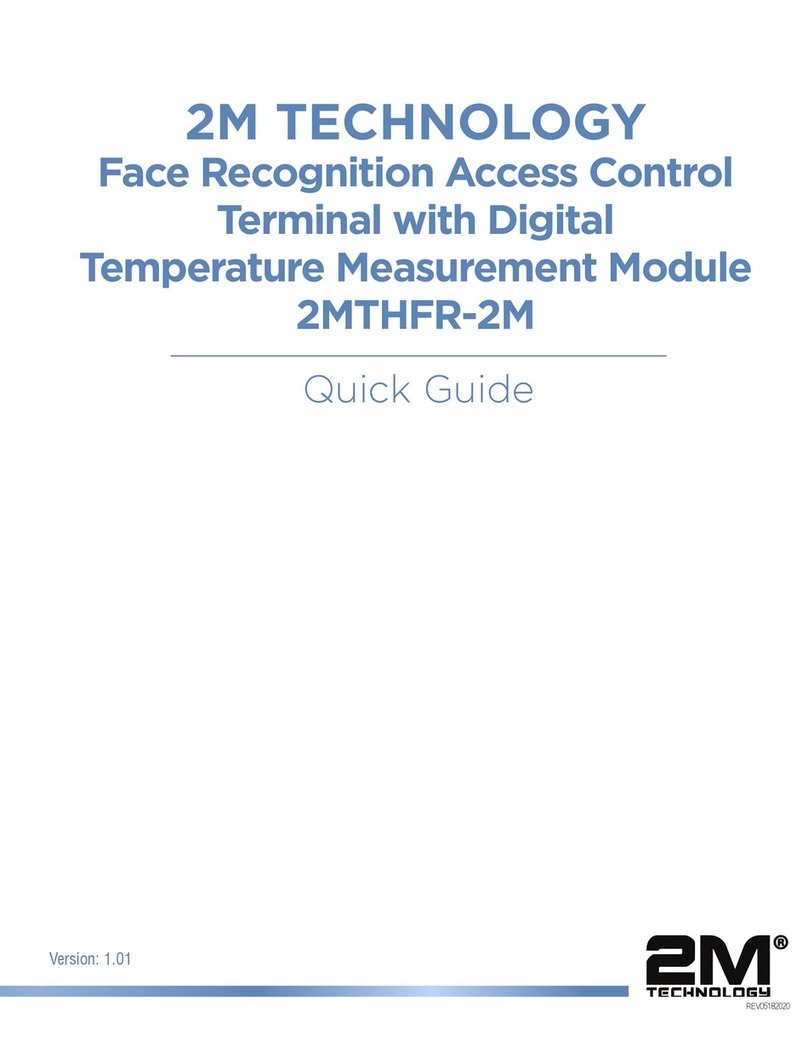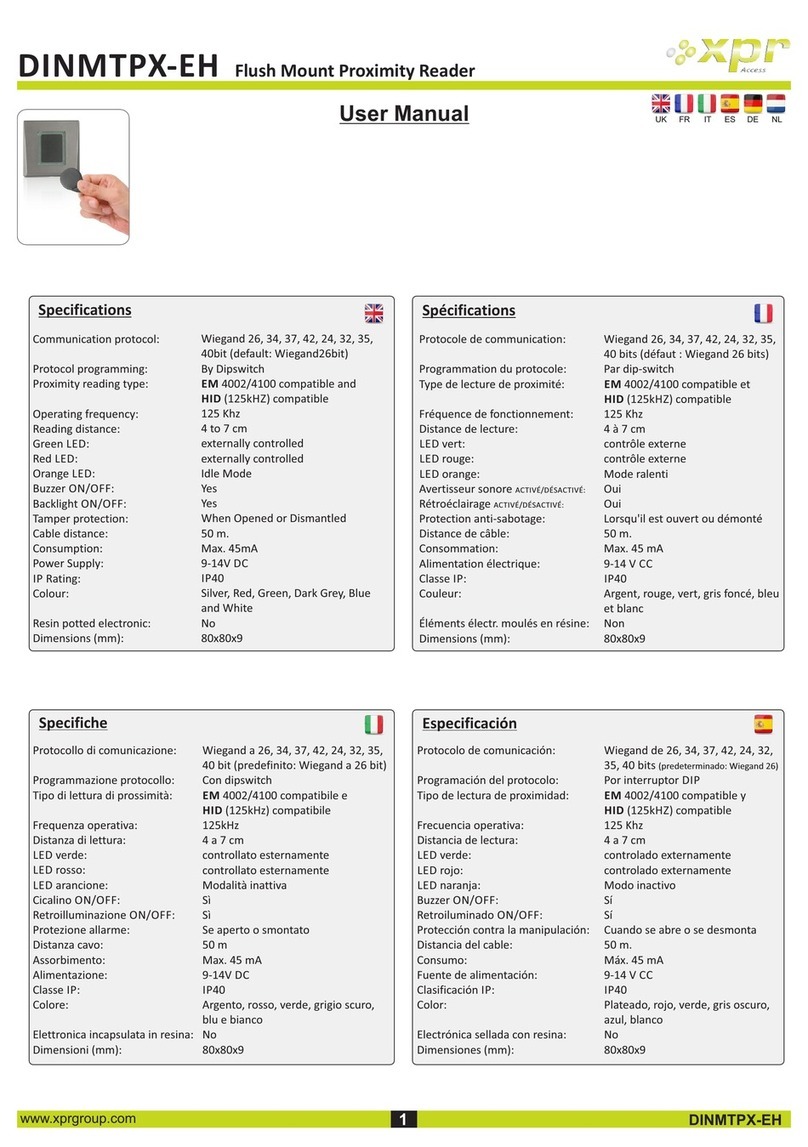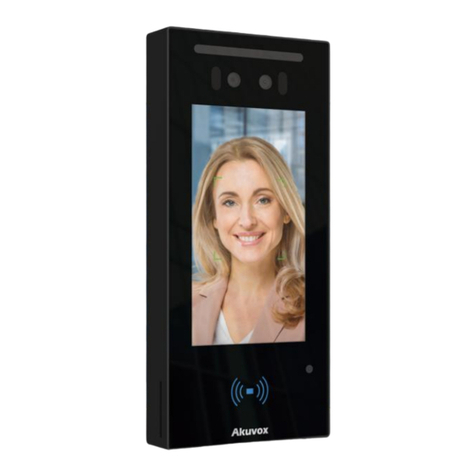PR302 v1.0 Installer Manual EN Rev. B.doc 8/19/2008
- 2 -
Introduction
This document contents minimum information required for electrical installation of PR302 access
controller.
Installation
The PR302 can be installed in indoor location only. All electrical connections must be made before
power supply will be applied. Factory new unit is configured for address ID=00 and has programmed
MASTER PIN (1234) and MASTER card (delivered with the new device). The MASTER card/PIN can
be used for initial testing of the controller - the single use of MASTER card/PIN activates
momentarily REL1 output (for approx. 4s); double, consecutive use of MASTER card/PIN changes
controller’s arming mode and switches IO1 output to reverse state.
All devices working in one access system and connected to the same RS485 communication bus
should have common minus (common GND). This can be achieved by connecting all supply minuses
using additional (separate) wire or connecting each supply minus with earth, however the second
method might create problems when electrical potentials of the earth are not the same in different
parts of the electric installation.
Note: It is forbidden to short positive outputs (DC+) from various sources of power and/or other DC
outputs available in the system.
Setting address
Before controller will be connected to communications bus it should be configured to individual
address (ID number=00..99). The controller’s address can be set manually using Memory Reset
procedure or from PC computer. In order to set/change controller’s address from PC connect it to
any free COM port and then using PR Master program enrol it to database. Once the unit is found by
PR Master use relevant command to change its address and then disconnect it from PC and connect
to designated access installation.
Note: Connecting two or more controllers with the same address will cause communications conflict
on the communication bus.
Power supply
Controller requires 10-15V DC supply and consumes 100mA average current. The power source
should provide DC voltage free of interferences. Using poor quality switched mode power sources
can cause reduction of card reading distance. Always carefully calculate wire gauge used to supply
access controller, note that amount of current required by controller can rise momentary up to
200mA. The GND input to controller is also reference ground for RS485 com. bus and for all signal
lines used in controller.
Door Lock
In most cases door locks are inductive type loads and generate strong voltage surges when
switching to off state. This phenomenal can corrupt electronic circuits and change its behaviour. In
order to protect access controller from these effects, every inductive load (like door lock or any
other coil) should be protected with silicon diode (e.g. 1N4007) connected as close as possible to the
switched device. Also, door locks should be wired using separate pair of wires connected directly to
the source of power.










